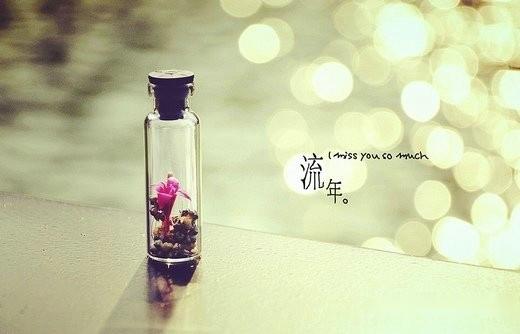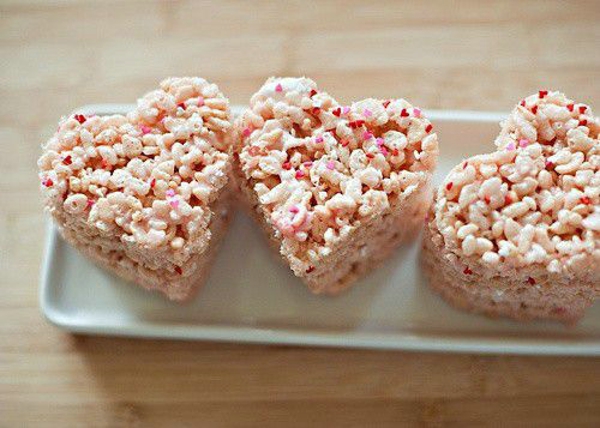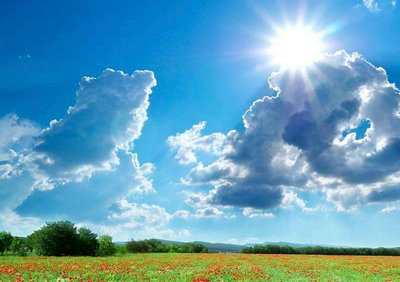
Now we have been to the Summer Palace, the Summer Palace formerly qingyi park, built qing dynasty emperor qianlong fifteen years as AD 1750, Beijing in the qing dynasty, is the famous "three mountains five gardens" built in the last one. Also is one of China's four big gardens, on March 4, 1961, the Summer Palace was announced as the first batch of national key cultural relics protection units, in August 1998 was rated as the world cultural heritage, the Summer Palace on May 8, 2007 by the national tourism administration approval for the state 5 a-class tourist scenic spot.
The Summer Palace gates, around the hall, came to the famous promenade. The promenade is 720 meters long, divided into 273 rooms, each cross on the sill between painted with colorful painting, painting the character, the grass, the landscape, as well as some historical stories and myths and legends.
Tourists now here we are at the foot of longevity hill, you look at that whether there is a three layer architecture of anise pyramid stand that is halfway up the mountain, buddhist incense under the rows of resplendent and magnificent palace, is to go to the temple.
From down is kunming lake and longevity hill kunming lake has 270 square meters, the center of kunming lake there is a small island, visitors just walked through the long stone bridge to the island to play, this bridge seventeen holes, called the marble seventeen-arch bridge which. On the marble seventeen-arch bridge which has hundreds of pillar, each pillar are carved with a lion cub. You come look, the little lion, like hunting on the vast grasslands. The lion is also very interesting, buried his head, as if in to enjoy the "dinner". Children to look at, the lion stare big eyes, like in the appreciation of the beauty of the Summer Palace?
The Summer Palace, everywhere has the beauty of the scene, I also said today (Monday). Below please free to enjoy, to protect the environment, cannot destroy public property, if visitors have with children care for their children in order to avoid loss, separated, 12 noon on 17th bridge collection.
Today's tourism so far, hope to the Summer Palace today journey left eternal memory in our trip to Beijing. I sincerely wish you all a happy travel! The tourists, goodbye!
嗨!大家好,我是大家的导游小林,今天由我带领大家游览世界文化遗产—风景优美的颐和园,希望大家玩得愉快,玩得尽兴。
现在我们已经到颐和园了,颐和园原名清漪园,始建于清朝乾隆帝十五年也可以说是公元1750年,是清代北京著名的“三山五园”中最后建成的一座。也是中国四大名园之一,1961年3月4日颐和园被公布为第一批全国重点文物保护单位,1998年八月被评为世界文化遗产,2007年5月8日颐和园经国家旅游局正式批准为国家5A级旅游景区。
进了颐和园的大门,绕过大殿,就来到有名的长廊。这条长廊有720米长,分成273间,每一间的横槛上都画着五彩的画,画着人物、画草、风景,以及一些历史故事和神话传说。
游客们现在我们到万寿山脚下了,你瞧那是不是有一座八角宝塔形的三层建筑耸立在半山腰那就是佛香阁,下面那一排排金碧辉煌的宫殿,就是排去殿。
从万寿山下来就是昆明湖,昆明湖有270平方米,昆明湖中心有个小岛,游客们只要走过长长的石桥就可以到小岛上玩,这桥有十七个孔叫十七孔桥。十七孔桥上有上百根石柱,每根石柱上都雕刻着一只小狮子。大家快来看,这只小狮子威风凛凛,好像在辽阔的草原上狩猎。这只狮子也很有趣,埋着头,好像在享用“美餐”。小朋友快来看,这只狮子瞪大眼睛,像不像在欣赏颐和园的美景啊?
颐和园处处有美丽的景色,我也不一一说了。下面请大家自由欣赏,要保护环境,不能破坏公共财物,游客如果有带小孩的请看好自己的孩子以免丢失、走散,中午12点在十七桥集合。
今天的旅游到此为止,希望今天颐和园的旅程在这次北京之旅中留下永恒的记忆。我衷心祝大家旅游愉快!游客们,再见!
The Summer Palace can be divided into two parts: Longevity Hill and Kunming Lake. The whole garden covers an area of 290 hectares, of which three- fourths consists of a lake and rivers. This imperial garden features 3,000 room-units and covers an expanse of 70,000 square meters with more than 100 picturesque spots of interest. The layout of the Summer Palace includes three groups of architectures: palaces where the emperor attended to state affairs, resting palaces of the emperor and empress, and sightseeing areas. Entering the East Gate we will come the office quarters. Entering the East gate we will come to the office quarters. The annex halls on both sides were used for officials on duty.
This is the Gate of Benevolence and Longevity. Above the door there is a plaque bearing the same name in both Chinese and Manchurian characters. The gigantic rock in the foreground is known as Taihu rock, or eroded limestone, quarried in Jiangsu Province and placed here to decorated the garden.
On the marble terrace sits a bronze mythical beast, known as Qilin or Xuanni. It was said to the one of the nine sons of Dragon King. A point of peculiar interest is that it has the head of a dragon, antlers of a deer, the tail of a lion and hooves of an ox, and is covered with a unique skin. IT was considered an auspicious creature that brought peace and prosperity.
This grand hall is the Hall of Benevolence and Longevity. It was built in 1750, and was known as the Hall of Industrious Government. Emperor Qianlong ruled that the halls where monarchs attended to state affairs would be named after them. After the rebuilding of the Summer Palace, the hall was renamed, suggesting that benevolent rulers would enjoy long lives.
The arrangement of the hall has been left untouched. In the middle of the hall stands a throne made of sandalwood and carved with beautiful designs. In the background there is a screen carved with nine frolicking dragons. On either side of the throne there are two big fans made of peacock feathers, two column-shaped incense burners, crane-shaped lanterns and an incense burner assuming the form of Luduan, a mythological animal which was suppose to have the power to prevent fire. The small chambers on eight side were where the Emperor Qianlong and Empress Dowager Cixi rested and met officials on formal occasions.
On the verandah in the foreground of the hall there are bronze statues of dragon and phoenixes which served as incense burners on major occasions. They are hollow and smoke comes through holes on their backs. Also on the veranda are Tai Ping (Peace) bronze water vats made during the reign of Emperor Qianlong. As a precaution in case of fire, a fire was lit underneath the vats in the winter to keep the water in them from freezing.
(At the entrance of Garden of Virtuous Harmony)
Outside the East Gate–in front of the Hall of benevolence and Longevity- in front of Garden of Virtuous Harmony-in front of the Grand Theater Building- a lakeside walk from the Garden of Virtuous Harmony to the Hall o Jade Ripples- in front of the o Jade Ripples- in front of the Yiyunguan (Chamber of Mortal Being)-Hall of happiness and longevity- in front of the Yaoyue (Chamber of Mortal Beings)-Hall of Happiness and Longevity-in front of the Yaoyue (Inviting the Moon) Gate of the Long Corridor- strolling along the Long Corridor- visiting an exhibition of cultural relics- in front of the Hall of Dispelling Clouds- inside the Hall of Dispelling Clouds- atop the Tower of Buddhist Incense- on a hilltop leading from the back door of the Tower of Buddhist Incense- on a hilltop leading from the back door of the Tower of Buddhist Incense- inside the Garden of Harmonious Interest –outside the south gate to Suzhou Shopping Street- atop the stone bridge inside the Suzhou shopping street –on the road from the south gate of suzhou shopping street- on the road form the south gate of suzhou shopping street to the marble boat- in front of the ruins of the Garden of complete spring –along the lakeside by the marble boat-boating on the Kunming Lake-leaving out through the East Gate.
(Outside the east gate)
Ladies and Gentlemen:
Welcome to the Summer Palace. (After the self-introduction of the guide -interpreter) I hope this will be an interesting and enjoyable day for you.
During our tour, you will be introduced to time honored historical and cultural traditions, as well as picturesque views and landscapes.
The construction of the Summer Palace first started in 1750. At that time, the Qing Dynasty was in its heyday and China was a powerful Asian country with vast territories. The monarch in power then was Emperor Qianlong. With supreme power and large sums of money, he summoned skillful and ingenious artisans from all over the country to carry out this construction work in honor of his mother's birthday. After 15 years and one seventh of the nation's annual revenue spent, the Garden of Clear Ripples was completed and served as a testimony to China's scientific and technological achievements. In 1860, this vast royal garden was burnt down along with the Yuanming Yuan (Garden of Perfection and Brightness) by Angol-French allied forces. In 1888, Empress Dowager Cixi reconstructed the garden on the same site and renamed it the Garden of Nurtured Harmony (Summer Palace). Characterized by its vast scope and rich cultural embodiments, the Summer Palace has become one of the most famous tourist sites in the world.
This is the main entrance to the Summer Palace-the East Gate On top of the eaves of the door there is a plaque bearing a Chinese inscription which means "Garden of Nurtured Harmony", whose calligrapher was Emperor Guangxu. The gate that you are now entering was used exclusively by the emperor, the empress and the queen mother. All others used the side doors.
Hello, welcome you to Beijing Summer Palace! My horse is, today I have for you is to explain Beijing Summer Palace! Please note: please don't littering, don't spit, protect the environment, with good team! Now let's go! Hope I can let you remember the interpretation of the good time, I wish you have a lot of fun!
The earliest dynasties era in the emperor had started to build in Beijing imperial garden. In today's longevity hill kunming lake area will be built here, jinshan kingsoft, called JinShanBo. To this, there was renamed aung, aung tabor. And early Ming is renamed lake and built the temple, named static good mountain park. At sixteen, wanli is also is in here has 1588 landscape scale, enjoy certain green line li, like the white jiangnan ode. But let there really become a royal garden of the qing dynasty is. In the emperor kangxi years was built in the emperor qianlong palace, came to fourteen years, namely 1749 - jehoaddan in 1764 built on the basis of the original qingyi park, lake, mountain, kunming lake, the lake is called mountain called longevity hill. And here also became famous gardens. And most of the imperial palace in ancient China, here also can't escape the invaders in 1860, be spoiled by the anglo-french allied forces and destroyed. After some years, the empredowager cixi embezzled funds for the navy, and under the emperor guangxu reconstruction has renamed the Summer Palace here. But in 1900, the Summer Palace again by the anglo-french allied forces (Russia), meaning the serious destruction. Since then the rebuilt in here, so, because of the financial HouShan parts are not long. In 1912, QingShi according to the conditions, the Summer Palace is still in Hudson emperor puyi hands. After two years, and there was a his private property, but because once open transportation fares expensive, no one came. In 1924, after the Summer Palace, pu excommunicated beiyang government will formally to opening to the park. December 1948, the people's government, after accepting here after comprehensive governance, still holding the royal garden style. And it also became the world, architecture, landscape on the best-preserved imperial gardens.
We will see the total covers an area of 290 hectares, including land quarter, water reached three-fourths. According to the royal garden, the garden USES and can be divided into political scenic area, the Summer Palace built residential and the scenic area three parts.
We came to visit the eastern will formally began.
In the east gate, there is a han xu yan xiu Yan, the archway. The meaning of han xu is open, beautiful scenery, all-encompassing. Yan xiu is capture the beautiful scenery. But as the main palace also. On the door of the property of the Summer Palace is the emperor guangxu board of calligraphy. Yi and two words are taken, the remaining calm mood.



